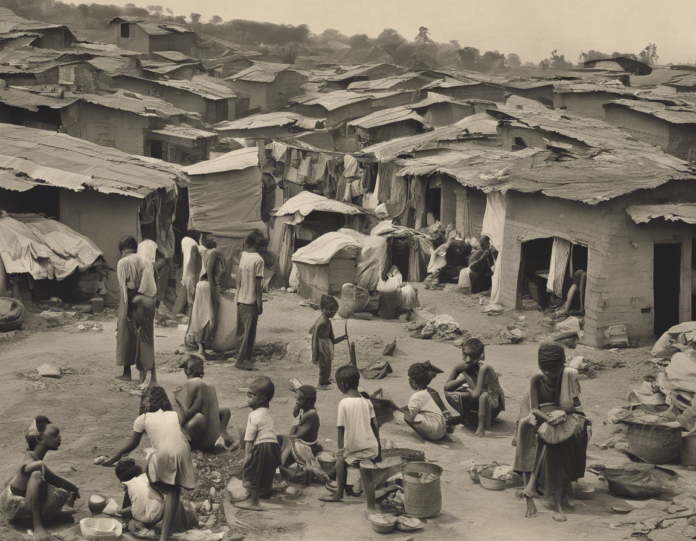In the modern world, poverty remains a prevalent issue affecting millions of individuals globally. According to the World Bank, around 10% of the world’s population lives in extreme poverty, surviving on less than $1.90 a day. Understanding poverty is crucial for addressing this complex problem effectively. In this article, we will delve into what poverty is, its causes, effects, and potential solutions.
What is Poverty?
Poverty is a condition characterized by a lack of essential resources needed to meet basic human needs, such as food, shelter, clothing, and access to education and healthcare. It hinders individuals from leading a dignified and fulfilling life, trapping them in a cycle of deprivation and marginalization.
Types of Poverty
-
Absolute Poverty: This type of poverty refers to a severe deprivation of basic human needs, including food, clean water, sanitation facilities, health, shelter, and education. Individuals living in absolute poverty struggle to meet their most basic needs for survival.
-
Relative Poverty: Relative poverty is a situation where individuals do not have the minimum amount of income or resources needed to maintain the average standard of living in society. It is often measured in comparison to the living standards of the general population.
Causes of Poverty
Poverty is a multidimensional phenomenon influenced by various factors at the individual, community, and societal levels. Some of the primary causes of poverty include:
- Unemployment: Lack of job opportunities and underemployment can contribute significantly to poverty.
- Low Wages: Inadequate wages for work performed can push individuals into poverty.
- Lack of Education: Limited access to quality education can hinder social mobility and perpetuate poverty cycles.
- Health Issues: High healthcare costs and poor health outcomes can drain financial resources, leading to poverty.
- Discrimination: Racism, sexism, and other forms of discrimination can limit individuals’ opportunities for economic advancement.
- Geographic Factors: Living in remote or underdeveloped areas with limited access to resources can exacerbate poverty.
Effects of Poverty
Individual Level
- Malnutrition: Poverty often leads to inadequate food intake and malnutrition, affecting physical and cognitive development.
- Limited Opportunities: Lack of resources and access to education can limit individuals’ potential for personal and professional growth.
- Poor Health Outcomes: Poverty is associated with higher rates of chronic illnesses and limited access to healthcare services.
Societal Level
- Social Disparities: Poverty can deepen existing social inequalities, leading to social unrest and tensions.
- Economic Impact: High levels of poverty can hinder overall economic growth and development in a society.
- Crime Rates: Poverty-stricken areas may experience higher crime rates due to socio-economic factors.
Solutions to Poverty
Addressing poverty requires a multi-faceted approach that tackles its root causes and provides sustainable solutions. Some effective strategies to combat poverty include:
-
Education: Investing in quality education can empower individuals with the skills and knowledge needed to break the cycle of poverty.
-
Employment Opportunities: Creating job opportunities and ensuring fair wages can lift individuals out of poverty and promote economic stability.
-
Social Safety Nets: Establishing social safety net programs such as food assistance, healthcare, and housing subsidies can provide essential support to vulnerable populations.
-
Microfinance: Providing access to small loans and financial services can enable individuals to start businesses and improve their economic situation.
-
Empowerment of Marginalized Groups: Promoting gender equality and combating discrimination can enhance opportunities for all individuals to thrive economically.
-
Community Development: Investing in infrastructure, healthcare facilities, and social services in impoverished areas can uplift communities and improve overall well-being.
Frequently Asked Questions (FAQs)
- What is the poverty line?
The poverty line is a threshold set by governments to define the minimum level of income required to meet basic living standards. It serves as a benchmark for determining individuals living in poverty.
- How does poverty impact children?
Poverty can have detrimental effects on children’s physical, cognitive, and emotional development. It can lead to malnutrition, limited access to education, and poor health outcomes, impacting their long-term well-being.
- What role does economic inequality play in perpetuating poverty?
Economic inequality exacerbates poverty by concentrating wealth in the hands of a few, limiting opportunities for economic mobility and perpetuating social disparities.
- How can individuals contribute to poverty alleviation efforts?
Individuals can contribute to poverty alleviation by supporting charitable organizations, advocating for policy changes, volunteering in their communities, and promoting awareness about the root causes of poverty.
- Is poverty solely an economic issue?
While poverty has significant economic implications, it is also a social, political, and structural issue influenced by various interconnected factors such as education, healthcare, discrimination, and access to resources.
In conclusion, understanding poverty is essential for developing effective strategies to combat this pervasive issue. By addressing the root causes of poverty, promoting social inclusion, and empowering individuals and communities, we can work towards creating a more equitable and just society for all.






